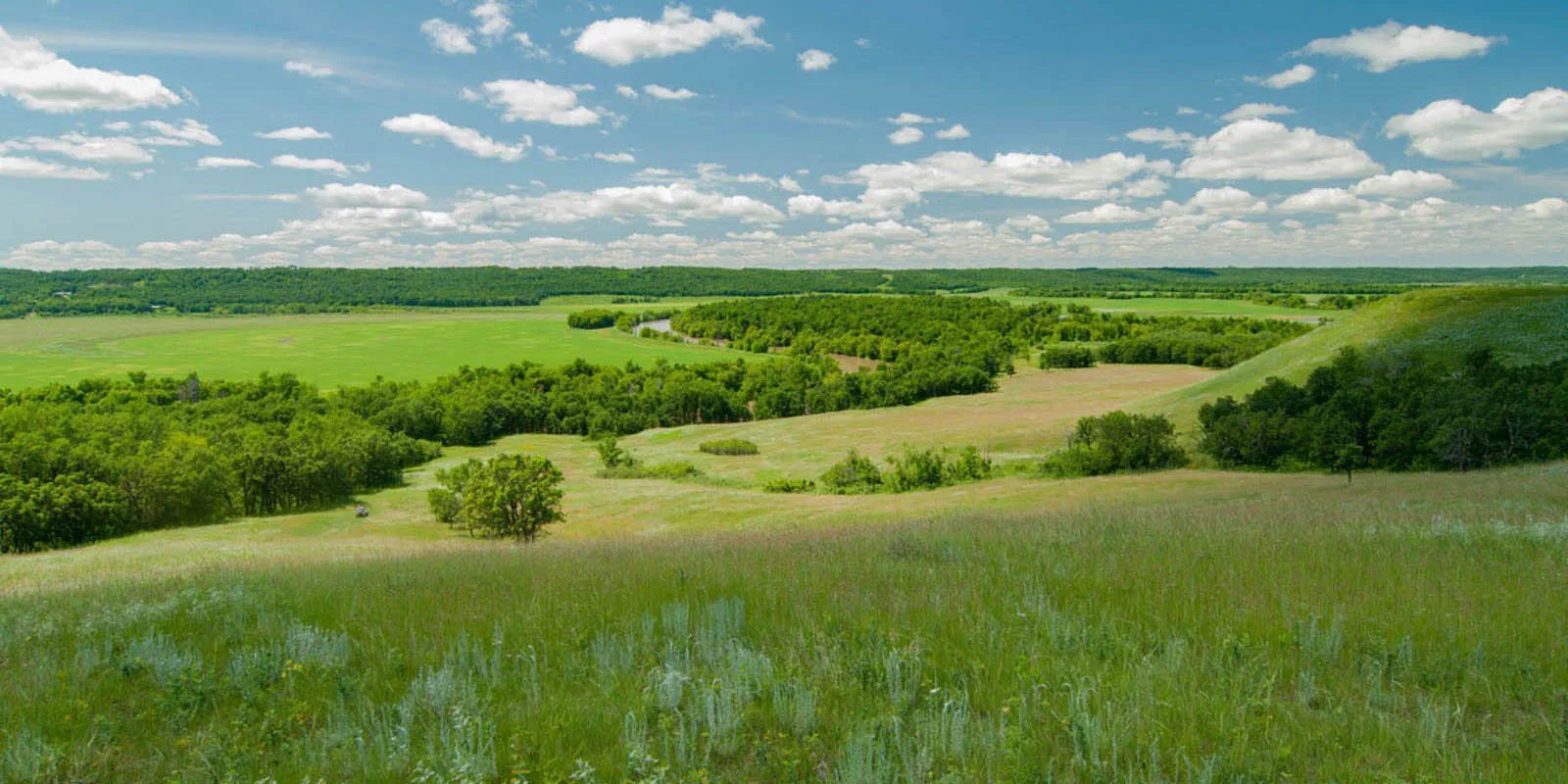This interview with Keith Fonstad, Director of Aboriginal Services, Saskatchewan at MNP was originally published on the Saskatchewan First Nations Economic Development Network website. It has been reproduced with permission.
Keith Fonstad is a partner at MNP in Prince Albert and holds the Chartered Professional Accountant (CPA) and Certified Aboriginal Financial Manager (CAFM) designations as well as a Master’s in Professional Accounting. Keith has been working with First Nation communities since 2006 and joined the Board of the Saskatchewan First Nations Economic Development Network in 2017.
Can you tell us about your work with First Nations communities?
I started working with three First Nations in 2006 when they needed a new auditor. I quickly realized how gratifying it was to help them both in compliance with their audits. Also with implementing proper controls, accessing funding, providing training and all the different opportunities that went with that. It was good to see results that helped the whole community – when they were successful they could redirect funding to community needs that had direct impacts on families.
Do you primarily audit and report to INAC or to the community?
We are asked by Chief and Council or First Nations members to provide an opinion on whether the information in their financial statements can be relied upon by those who are reading them. The financial statements may be provided to funders, bankers, members and other stakeholders. With the First Nations Financial Transparency Act, most First Nations have their consolidated financial statements posted publicly for anyone to see.
In working with First Nation communities, it’s not just the government side, it also includes business. First Nations are involved in every industry. You get to see everything from a fish plant, airlines, hotels, mining services to investment companies. Each entity we work with requires some sort of expert support. Whether it’s some level of assurance such as an audit or review, tax filing assistance or some level of advisory support. A First Nation community is complex with its operations and its financial reporting requirements, therefore the work we do with a community can also be complex and challenging.
What in your experience works well for First Nations business?
Finding someone they can trust and who can provide good advice. Strong management, whether non- or Indigenous individuals. It doesn’t matter the ethnic background as long as they have good expertise.
Most governance structures try to have a mix of community members and non-members – that seems to be the most effective model. However, some of the most successful communities with the largest Economic Development Corporations are run by Chief and Council. So, it’s not fair to say it’s not a successful model. But that only works if there is strong management and Chief & Council allow management to run the business, with limited political interference.
For newer business entities getting started, I would say having the right expertise brought on to the Board is really important. You might have seven people, and some will be from the community, but others should have a business, finance or law background. It definitely strengthens the ability of organizations to make good decisions.
What are the biggest mistakes that people have a hard time avoiding?
There is a perception that First Nations have a step up, either through grants or supports that may or may not exist. There are lots of people who attempt to take advantage of that by trying to sell an idea to First Nations. They end up having a lot of options presented to them and most of them aren’t good.
So, you need a really good investment criteria process. You have to ask, “does it meet what’s important to the community? Are the partners someone you want to do deal with? Is it ethically appropriate? Is the idea a good one? How much money do you want or need to invest?”
A framework set up to have those discussions and pass through that scrutiny helps protect the community – it stops the process before it goes bad and puts their capital at risk.
Are you referring to a due diligence process?
Due diligence is one part of an investment criteria. The bigger picture is knowing what it is that you want to accomplish. If you don’t have capital to invest, some opportunities will not be not available. You need to know your strengths, what assets are available and the community’s values; what’s important to the community and what’s available to the community.
Should the priority be profit creation or job creation?
That’s a decision a community needs to make. Initially, it’s hard to do both at the same time as the decisions for each priority can work against each other. A profit or wealth creation strategy, if successful will eventually help to create jobs, but they may not be specific to the First Nation’s community members or located geographically close to the community. For a job creation strategy, decisions still need to be made to support profit, because if a business is not self-sustaining it can’t survive. But profits can be reinvested in jobs instead of a wealth creation strategy where profits are retained to create more profits or provided to the First Nation for funding specific opportunities such as housing.
Some communities might also look at separate businesses for on-reserve job creation and off-reserve wealth creation. A lot depends on the opportunities provided to each community in relation to its size, location and current economic development initiatives.
What perceptions about business development are you seeing in First Nation communities?
It’s very individual – what experience and history the individuals have lived through. Some have had really good experiences and been provided positive opportunities and role modelling. Others have had no modelling or supports or have experienced bad situations. The unfortunate dependency on the government because of the historical structure of First-Nations–Crown relations sometimes biases individuals in their approach to business development, which can limit their approaches to new business development and the speed in which decisions are made.
A common consideration most community business organizations have is a more conservative approach to risk because they are often dealing with the community’s money. When investments are lower risk they usually have lower returns. But it’s public money in that it’s for the benefit of the community’s members. It makes it less desirable to participate in a higher risk venture.
How are First Nations developing and leveraging trusts?
Trusts are just a vehicle to hold money with restrictions on how that money is used. So, there are many instances where a First Nation may use trusts. The sale of a profitable business may see the proceeds put in trust for future business use or to be provided to members in the future. Treaty Land Entitlement settlements are set up in trusts to manage the process of buying land. Impact Benefit Agreement revenues are also sometimes put in trusts to ensure the terms of the agreement are met. If a trust was set up properly and is workable, it can be a great support for business because it provides access to capital.
A word of advice I would give – make sure a trust is workable from the beginning, because once it’s set up it’s hard to change. Therefore, get the advice of a few specialists from different fields to make sure it’s right.
What legislative or bureaucratic barriers do you see that need removal?
There are sections under the Indian Act that are paternalistic. For instance, land rent or oil and gas money has to flow to Ottawa and then the First Nation must request it back. The federal government doesn’t always manage this money optimally and First Nations can’t invest it while the government holds it. Some communities are setting up their own trusts now to manage that.
The First Nations Land Management Act can allow a community to get out of a third of the Indian Act and manage its own lands. More and more communities are working towards that.
I have heard there is renewed talk about abolishing the Indian Act, but I’m not sure about whether it will happen sooner, later or at all. But those conversations are now different than those which would have happened 10-15 years ago.
What have you seen change since 2006?
There’s been more participation and larger investments by communities. More opportunities available to them, more options. There were just a handful actively engaged in business in 2006, and now most have a strategy around economic development.
The unfortunate side is that in the past 12 years, there haven’t been a lot of different players as far as people involved. A lot of the same individuals in 2006 are still the ones involved now. There hasn’t been a generational shift of knowledge yet; not a lot of younger people participating in community-owned business.
In general, I don’t think there are enough young First Nation and Métis people going in to business school, so it makes it difficult to recruit them into business roles, either as a financial team member, accountant, controller, CFO or manager. The current majority are from the older generation and there’s not a lot of succession planning or the ability to create a succession plan. It’s just a small pool, and there is more demand than there is supply.
Are you optimistic or pessimistic about the future for Saskatchewan First Nations?
Definitely hopeful. The situation is way better than when I started working with these communities in 2006. It’s just going to continue to improve as we get more positive role models, more opportunities, more participation in the economy and a better understanding by Canadians of what First Nations add to our country. The traction is there. It can’t do anything but get better.
First Nations in Saskatchewan are some of the most progressive in the country. There are lots of positive role model communities. We provide quite a bit to the national conversation. There are things happening in Saskatchewan that other communities haven’t been able to replicate or start up.
The main thing for me – I’ve seen organizations that make decisions with and without consulting experts. It’s the ones who do consult the experts that tend to hit the mark. Asking the right questions to the right people at the right time is the trick.
For more information about Aboriginal Finance or how MNP assists Aboriginal Communities in Saskatchewan, contact Keith Fonstad, Director of Aboriginal Services, Saskatchewan, at 306.764.6873 or [email protected]






